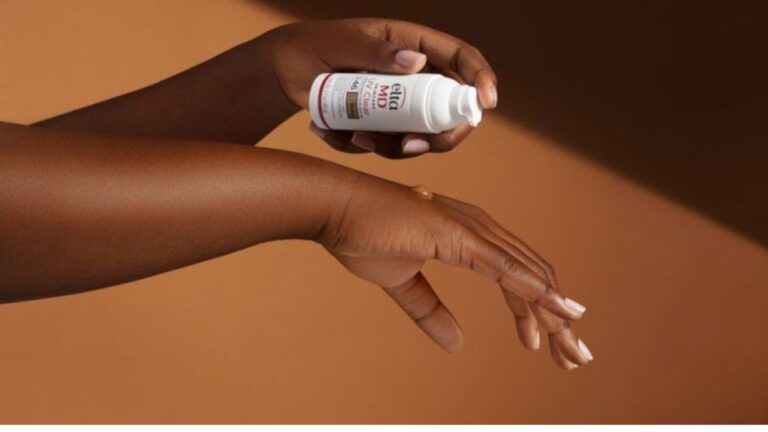
When it comes to skincare, exfoliation is a crucial step in maintaining healthy, radiant skin. One of the most popular and effective ways to exfoliate is through the use of AHA Skincare. Alpha Hydroxy Acids (AHAs) are a group of natural acids derived from fruits, milk, and other organic sources. These acids are well-known for their ability to gently slough off dead skin cells, revealing a fresher, smoother, and more youthful complexion.
In this article, we will explore what AHA Skincare is, how it works, the benefits it offers, and how you can incorporate it into your skincare routine. We’ll also answer some frequently asked questions to help you make informed decisions about using AHAs in your skincare regimen.
Table of Contents
What is AHA Skincare?
AHA Skincare refers to products that contain Alpha Hydroxy Acids—water-soluble acids that work on the surface of your skin to exfoliate and improve the overall texture and appearance. AHAs are commonly found in cleansers, toners, serums, and masks, and they are praised for their ability to gently exfoliate without the need for harsh scrubbing.
The most common types of AHAs used in skincare include:
- Glycolic Acid: Derived from sugar cane, glycolic acid is the most potent and widely used AHA. It has the smallest molecular size, which allows it to penetrate the skin effectively and provide deep exfoliation.
- Lactic Acid: Sourced from milk, lactic acid is gentler than glycolic acid, making it suitable for sensitive skin. It not only exfoliates but also hydrates the skin, making it a popular choice in moisturizers and serums.
- Citric Acid: Found in citrus fruits, citric acid has antioxidant properties and helps to brighten the skin while promoting exfoliation.
- Malic Acid: Sourced from apples, malic acid is known for its ability to improve skin texture and boost radiance.
- Tartaric Acid: Derived from grapes, tartaric acid is less common but still used in some skincare formulations to exfoliate and promote smoother skin.
How Does AHA Skincare Work?
AHAs work by loosening the bonds between dead skin cells, allowing them to be removed more easily. This process is known as exfoliation, and it helps to reveal fresh, new skin underneath. By removing the outermost layer of dead skin cells, AHAs allow for better absorption of other skincare ingredients, such as moisturizers, serums, and treatments.
The exfoliation process also stimulates the production of new skin cells, leading to smoother, firmer, and more youthful-looking skin over time. In addition to exfoliation, AHAs offer several other benefits, including improving skin tone, texture, and the overall appearance of fine lines and wrinkles.
Key Benefits of AHA Skincare
1. Exfoliates and Refines Skin Texture
One of the primary benefits of AHA Skincare is its ability to exfoliate and refine skin texture. Regular use of AHA-based products helps to remove the buildup of dead skin cells, which can make the skin appear dull and uneven. By promoting the shedding of these dead cells, AHAs reveal a smoother, more radiant complexion.
2. Brightens the Skin
As AHAs exfoliate the skin, they also help to reveal the brighter, fresher skin beneath. By removing dark spots, discoloration, and uneven skin tone, AHA Skincare can result in a more uniform and radiant complexion. Lactic acid, for example, is often used in products designed to lighten and brighten the skin.
3. Improves the Appearance of Fine Lines and Wrinkles
The exfoliating effects of AHAs also stimulate collagen production, which is essential for maintaining skin elasticity. Over time, this can help reduce the appearance of fine lines and wrinkles, leaving the skin looking smoother and more youthful. Glycolic acid, in particular, is often included in anti-aging products for this reason.
4. Reduces Hyperpigmentation
Hyperpigmentation, which manifests as dark spots, melasma, or post-acne scars, can be diminished with regular use of AHA Skincare. AHAs work to exfoliate the skin and lighten dark spots by promoting the turnover of skin cells. Lactic acid, for example, is often used in products designed to address pigmentation issues.
5. Hydrates and Moisturizes
While AHAs are primarily known for their exfoliating properties, many AHA-based products also have hydrating benefits. Lactic acid, in particular, has a natural moisturizing effect, making it an excellent option for individuals with dry or dehydrated skin. AHAs help to attract and retain moisture, leaving the skin feeling plump and refreshed.
6. Improves Skin Tone
With regular use, AHA Skincare can help even out skin tone by fading discoloration and improving overall texture. The exfoliating action of AHAs reduces the appearance of redness and blotchiness, resulting in a smoother and more even skin tone.
7. Helps with Acne
AHAs can help treat acne by exfoliating the skin and preventing pores from becoming clogged with dead skin cells. By keeping the skin clear of these impurities, AHAs can reduce the occurrence of breakouts and help improve the appearance of acne-prone skin.
How to Incorporate AHA Skincare Into Your Routine
Incorporating AHA Skincare into your routine can be an easy and effective way to achieve smoother, brighter skin. Here’s a basic guide on how to use AHA Skincare products:
1. Start Slow
If you’re new to AHAs, it’s important to start slow and gradually introduce them into your skincare routine. Begin by using an AHA product once or twice a week, and gradually increase the frequency as your skin builds tolerance.
2. Cleanse First
Before applying AHA products, make sure your skin is clean. Use a gentle cleanser to remove dirt, oil, and makeup. This ensures that the AHA product can effectively penetrate the skin and deliver its benefits.
3. Use After Cleansing
Most AHA Skincare products, such as toners, serums, or masks, should be applied after cleansing and before moisturizing. Apply a small amount to your face and allow the product to absorb before moving on to the next step in your routine.
4. Follow with Sunscreen
AHAs can make your skin more sensitive to the sun, so it’s essential to apply sunscreen during the day, especially if you’re using AHA products regularly. Use a broad-spectrum SPF 30 or higher to protect your skin from harmful UV rays and prevent sun damage.
5. Moisturize
After using AHA products, follow up with a moisturizer to hydrate and nourish your skin. This helps to maintain the skin’s moisture balance and prevents any potential dryness or irritation caused by the exfoliation process.
Possible Side Effects and Precautions
While AHAs are generally safe for most skin types, some people may experience mild irritation, redness, or dryness when first using AHA Skincare products. This is especially true for those with sensitive skin. To minimize irritation, start with a lower concentration of AHAs and gradually increase the strength over time.
It’s also important to avoid using AHA products if you have active open wounds, sunburned skin, or certain skin conditions like eczema. Always perform a patch test before trying new products to ensure you don’t have an allergic reaction.
Frequently Asked Questions (FAQs)
1. Are AHA products suitable for sensitive skin?
Yes, but it’s important to start with a gentler AHA, such as lactic acid, which is less irritating than glycolic acid. If you have sensitive skin, always start with a low concentration and build up gradually.
2. Can I use AHA products with other active ingredients?
While AHAs can be combined with other active ingredients like vitamin C, it’s important to avoid combining them with strong retinoids or other exfoliating acids, as this can cause irritation. If you’re unsure, consult with a dermatologist.
3. How often should I use AHA skincare products?
If you’re new to AHAs, start by using them 1-2 times per week. As your skin builds tolerance, you can increase the frequency to 3-4 times per week. Avoid daily use unless your skin can tolerate it.
4. Can AHA skincare products be used during the day?
Yes, but because AHAs can make your skin more sensitive to sunlight, it’s crucial to apply sunscreen whenever you use them during the day.
5. Do AHA products work for acne?
Yes, AHAs are effective in treating acne. They help by exfoliating the skin, preventing clogged pores, and promoting cell turnover. Regular use of AHA products can reduce the frequency of breakouts and help improve skin texture.
Conclusion
AHA Skincare is a powerful and effective way to achieve smoother, more radiant skin. From exfoliating dead skin cells to improving skin texture, tone, and reducing signs of aging, AHAs offer a wide range of benefits for various skin concerns. Whether you’re looking to treat acne, hyperpigmentation, or simply want to achieve a youthful glow, incorporating AHA Skincare into your routine can help you unlock the potential of your skin. By following proper usage guidelines and starting with lower concentrations, you can enjoy the many benefits of AHAs while keeping your skin healthy and glowing.






